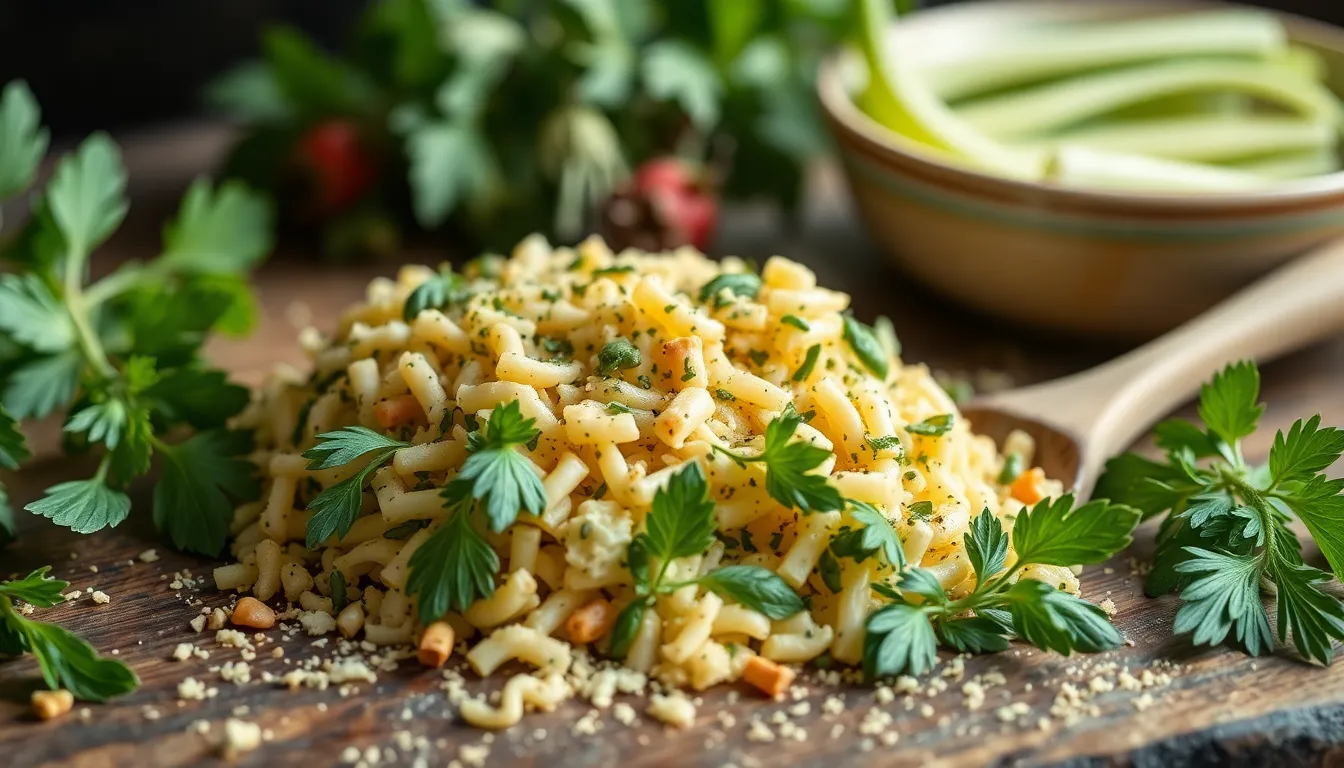Cooking with Herbs: The Best Techniques for Flavor Extraction
Herbs are the unsung heroes of the culinary world, transforming ordinary dishes into flavorful masterpieces. They not only enhance taste but also bring a burst of color and aroma to our meals. Understanding how to extract their flavors properly can elevate your cooking and impress your guests. In this article, we will explore various techniques for flavor extraction from herbs that can elevate your culinary creations to new heights.
Section 1: Understanding Herbs
1.1 Definition and Types of Herbs
Herbs are plants valued for their flavor, aroma, and medicinal properties. They can be broadly categorized into culinary and medicinal herbs. Culinary herbs are used in cooking for flavoring dishes, while medicinal herbs are used for their health benefits.
Some common culinary herbs include:
- Basil: Sweet and slightly peppery, often used in Italian cuisine.
- Rosemary: Pine-like and woody, perfect for roasts.
- Cilantro: Fresh and citrusy, a staple in Mexican and Asian dishes.
- Thyme: Earthy and minty, great for meats and stews.
1.2 Fresh vs. Dried Herbs
When it comes to herbs, freshness can significantly impact flavor. Fresh herbs have vibrant flavors and aromas, while dried herbs offer a more concentrated flavor but can lose potency over time.
Here’s a quick comparison:
- Fresh Herbs:
- Ideal for salads, garnishes, and finishing dishes.
- Use in larger quantities due to their milder flavor.
- Dried Herbs:
- Best for slow-cooked dishes, marinades, and sauces.
- Use less than fresh herbs since they are more potent.
Section 2: Techniques for Flavor Extraction
2.1 Basic Techniques
2.1.1 Chopping and Mincing
The size of herbs affects how flavors are released. Chopping herbs releases essential oils, while mincing them can intensify their flavor even further.
Best practices for chopping herbs include:
- Use a sharp knife for clean cuts.
- Chop in batches to maintain control over size.
- Always chop herbs just before use for maximum freshness.
2.1.2 Bruising and Crushing
Bruising and crushing herbs, such as basil or mint, helps to release their aromatic oils, enhancing the flavor. This technique is particularly useful for making cocktails or flavoring oils.
Suitable herbs for this method include:
- Basil
- Mint
- Cilantro
2.2 Advanced Techniques
2.2.1 Infusion
Infusing herbs into oils, vinegars, or broths is an excellent way to extract and preserve their flavors. Here’s how to make an herb-infused oil:
- Ingredients: Fresh herbs, neutral oil (like olive or canola).
- Instructions:
- Gently wash and dry your herbs.
- Lightly bruise the herbs to release oils.
- Combine with oil in a small saucepan over low heat.
- Let simmer for 30-60 minutes, then strain.
- Store in a cool, dark place.
2.2.2 Herb Pastes
Creating herb pastes is another fantastic method for extracting flavors. Herb pastes can be used as marinades, dressings, or cooking bases.
Suggested recipes for herb pastes:
- Chimichurri: Combine parsley, garlic, vinegar, olive oil, and spices.
- Basil Pesto: Blend basil, pine nuts, garlic, Parmesan cheese, and olive oil.
2.2.3 Blanching
Blanching involves briefly boiling herbs and then plunging them into ice water. This technique enhances color and flavor while reducing bitterness.
Recommended herbs for blanching include:
- Basil
- Parsley
- Spinach
2.2.4 Sous Vide Cooking
Sous vide cooking is a method that employs precise temperature control to extract flavors from herbs. This technique infuses dishes with deep, concentrated flavors while preserving their freshness.
Tips for using herbs in sous vide cooking:
- Add herbs directly into the vacuum-sealed pouch with your protein.
- Keep the herbs whole to avoid overpowering the dish.
Section 3: Flavor Pairing and Usage
3.1 Pairing Herbs with Ingredients
Understanding the flavor profiles of herbs and their best pairings is crucial for creating harmonious dishes. Here’s a helpful table to guide you:
| Herb | Flavor Profile | Best Pairings | Suggested Dishes |
|---|---|---|---|
| Basil | Sweet, slightly peppery | Tomatoes, Garlic | Caprese Salad, Pesto |
| Rosemary | Pine-like, woody | Lamb, Potatoes | Roasted Lamb, Potatoes |
| Cilantro | Fresh, citrusy | Lime, Spices | Salsa, Thai Dishes |
| Thyme | Earthy, minty | Chicken, Vegetables | Roasted Chicken, Ratatouille |
3.2 Cooking Tips
Using herbs effectively involves knowing when to add them during the cooking process. Fresh herbs are often best added at the end of cooking to retain their flavor, while dried herbs benefit from earlier incorporation to allow their flavors to meld.
Here are some storage tips to maintain herb potency:
- Store fresh herbs in a glass of water in the fridge.
- Wrap fresh herbs in a damp paper towel and place them in a plastic bag.
- Keep dried herbs in a cool, dark place in airtight containers.
Section 4: Conclusion
In conclusion, mastering the techniques for flavor extraction from herbs can significantly enhance your cooking. From chopping and crushing to infusion and sous vide, each method offers unique advantages that can elevate your dishes. We encourage you to experiment with these techniques, explore new flavor combinations, and let your creativity flourish in the kitchen.




